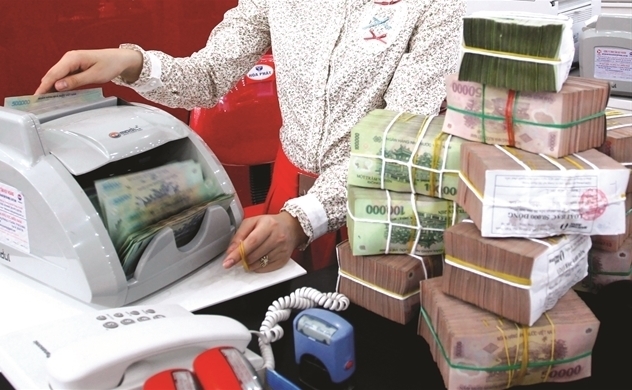Vietnam’s banks have too much cash

One of the most obvious manifestations of excess capital of banks is the early repurchase of their privately issued bond lots. Photo: Quy Hoa
A remarkable sign in the financial market is that deposits into the banking system have touched the threshold of VND 6.330 billion, according to data from the State Bank of Vietnam.
In the current context, from the investment perspective, efficiency, interest rates, and capital preservation... are the key factors to have a positive impact on savings, said Mr. Nguyen Duc Lenh, Deputy Director of the State Bank of Vietnam, Ho Chi Minh City branch.
The modest expansion of credit is a noteworthy indicator as well, together with the rise in savings accounts and ample capital reserves. The General Statistics Office reports that as of June 20, the total amount of payment climbed by 2.53% when compared to the end of 2022, credit growth increased by 3.26%, and capital mobilization of credit institutions increased by 3.26%. utilized just 3.13%.
Even the chairman of VietinBank's board of directors Tran Minh Binh, acknowledged that the bank had to halt raising capital after seeing negative credit growth for the first time in May 2023.
Banks' early bond repurchases show excess capital. Banks perform this process due to weak credit demand, a dramatic decline in deposit interest rates, and increased liquidity. Along with bonds, commercial banks are investing in investment securities.
In early July, the State Bank of Vietnam announced the adjustment of the credit growth target for 2023 for credit institutions with a system-wide allocation of about 14% - a figure consistent with the direction from the beginning of the year.
Meanwhile, credit growth since the beginning of the year has only reached over 4%, leaving plenty of room for banks to lend. The paradox has taken place: while banks have excess and lack capital, businesses are hungry for capital.
“The liquidity of commercial banks is redundant. It is true that when interest rates are high in other countries, credit could grow negatively, but with us, interest rates have been lowered, normally credit will increase,” said Dao Minh Tu, Deputy Governor of the State Bank of Vietnam.
This trend occurs when the economy faces many difficulties, investment demand declines, and consumption demand is low, so credit demand cannot be increased. “Businesses claim that it is difficult to access loans, but the State Bank is right about the ability to absorb capital being very low, the demand for capital is not large because export enterprises' orders decreased very sharply, from 50-70 %, especially in the leather and footwear, textile, and furniture industries,” explained Economist Nguyen Minh Phong.
A bank branch manager in Ho Chi Minh City said that this bank implemented a loan program with an interest rate of 5% per year with a total limit of VND 4,000 billion, but it could not be disbursed because there were no borrowers.
At the same time, a representative of an import-export business in consumer goods in Ho Chi Minh City said that they desperately needed capital, but it was not easy to access banks, because of the lack of collateral, they were not considered for unsecured loans.
Mr. Quan Trong Thanh, Director of the Analysis Division of Maybank Investment Bank, commented that while operating interest rates are continuously decreasing, lending rates in general are still being anchored by banks at a high level.
However, high-interest deposits are gradually being neutralized and in the near future, lending rates are likely to continue to decrease. In order for the lending interest rate to return to normal and healthy for the economy, it must be reduced by about 1.5 %/year compared to the current one. In addition, the operating interest rate may decrease by at least 0.5% in about the next 3 months, Thanh said.
The State Bank of Vietnam is one of the few central banks in the world to reduce interest rates, in the context that most countries still keep interest rates at high levels. In fact, both deposit and lending rates of banks have decreased by about 1.4-2.6% compared to the beginning of the year, but credit has not increased at the same time.
Therefore, in the coming time, according to the direction, the banking industry sets requirements for interest rates to continue in a downward direction, creating conditions for businesses to have capital.
Same category news
-
Huyen Hoang
-
Arthur Do và Nick Wood
Latest news
-
Vân Nguyễn
-
Huyen Hoang

 TIẾNG VIỆT
TIẾNG VIỆT 








_291615658.jpg)








